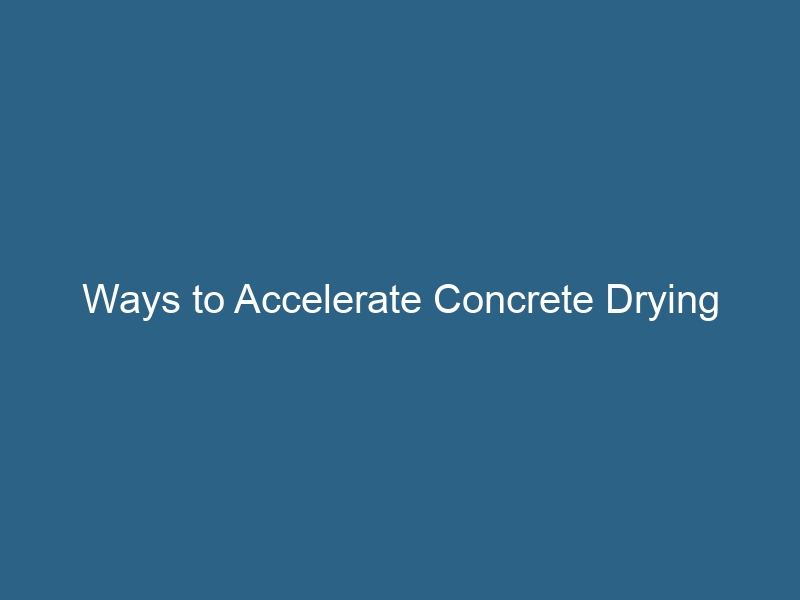Quck answer
Concrete drying can be sped up by following a few simple steps. First, ensure proper ventilation by opening windows or using fans to circulate air. Second, control humidity levels by using dehumidifiers or air conditioners. Third, apply a concrete sealer to prevent moisture from escaping. Fourth, use a moisture meter to monitor the drying progress. Finally, avoid adding excessive water during the mixing process, as this can prolong drying time. By implementing these strategies, concrete drying can be accelerated, allowing for quicker completion of construction projects.
Opting to pour your own concrete can save you money, but it’s essential to understand the drying process and how long it takes for concrete to dry in order to achieve successful results. Faster drying allows you to start using your new concrete area sooner. However, it’s important not to rush the drying process too much, as concrete that dries too quickly can have issues. By following best practices for concrete work, you can achieve both fast drying and a successful outcome.
Expected Drying Time
Typically, concrete is dry enough for walking on within 24 hours. However, the drying time may vary depending on the type of concrete used, so it’s important to read the packaging instructions to determine the appropriate waiting period. Some quick-drying concrete formulas allow you to walk on the surface within 10 to 12 hours.
Full curing, on the other hand, takes much longer. Under ideal conditions, concrete should reach about 90 percent of its strength within a week of being poured. At this point, if you’re installing a concrete driveway, you should be able to drive on it. However, complete curing usually takes 28 days, which is when the concrete achieves its maximum strength.
Avoid Rushing the Curing Process
It’s natural to want your concrete to dry quickly so that you can use it for its intended purpose. However, attempting to accelerate the drying process can lead to issues with the concrete.
If the concrete starts drying too soon after pouring, you may not have enough time to finish it properly, as it loses its workability rapidly. When concrete dries too quickly, it can become soft, chalky, weak, and unstable. It tends to be less durable and lacks strength. Additionally, it may develop internal problems and shrinkage cracks, especially if the top layer dries much faster than the lower layer.
Choose the Right Timing
Environmental conditions play a significant role in determining the speed at which concrete dries. In order for the concrete to harden, the water within it must evaporate. In high-humidity conditions, it takes longer for the concrete to release moisture. Air temperature is also a factor, with warm (but not excessively hot) air being ideal. If you pour concrete during a cold spell, expect it to take longer to dry.
To achieve optimal drying speed, schedule your concrete project for a time when the temperature is expected to be between 60 and 80 degrees Fahrenheit. This provides sufficient warmth for the concrete to dry appropriately.
Properly Mix the Concrete
When mixing concrete, always follow the product guidelines for adding water. Adding less water may cause the concrete to dry faster, but it will lack the necessary structural integrity to hold up well. On the other hand, adding too much water can slow down the drying process. Under normal conditions, using warm water can help accelerate the drying process. If you’re pouring concrete in hot weather, using cold water can help slow down the process to prevent it from drying too quickly.
Control Indoor Conditions
If you’re pouring concrete in an enclosed area, you have the ability to control the environment and improve the drying conditions. Keep the air warm by using heaters if necessary to maintain the ideal temperature range. Circulating the air with fans, opening windows, and utilizing your HVAC system can also help speed up the drying process. If the indoor humidity is high, using dehumidifiers can reduce the moisture in the air and accelerate drying.
Think about Using Concrete Additive
If you include calcium chloride in the concrete mixture prior to pouring it into the designated area, it can accelerate the process of curing. However, it is important to verify the building codes and regulations in your locality, as there may be limitations on the amount of calcium chloride that can be added to the concrete.


